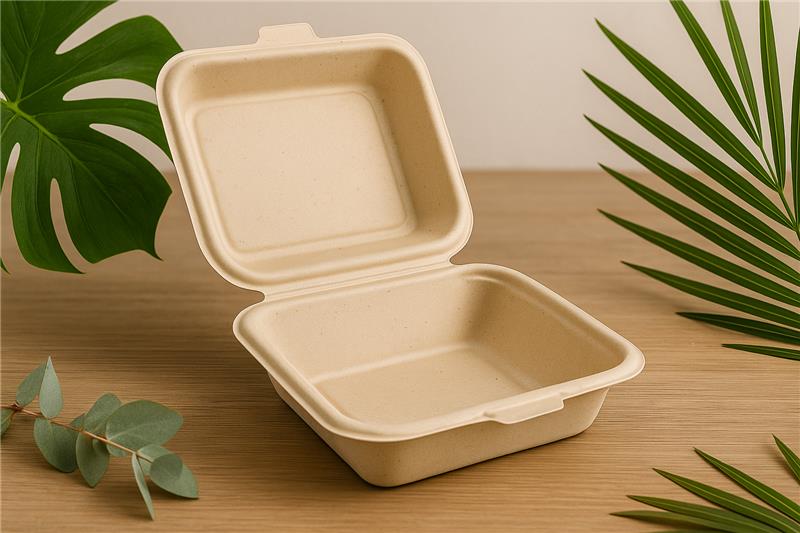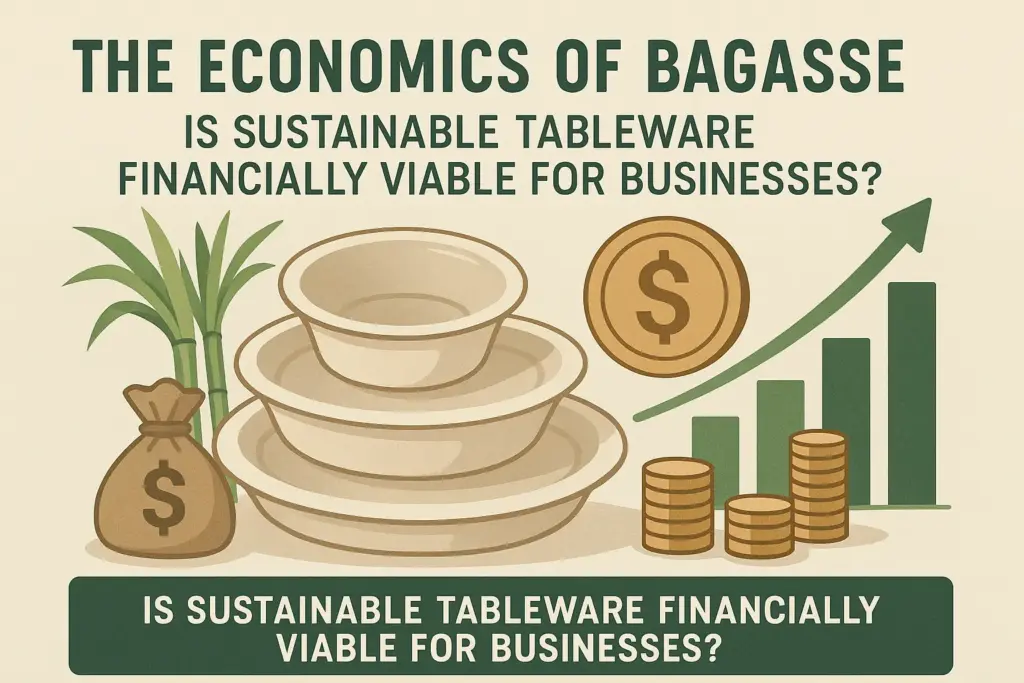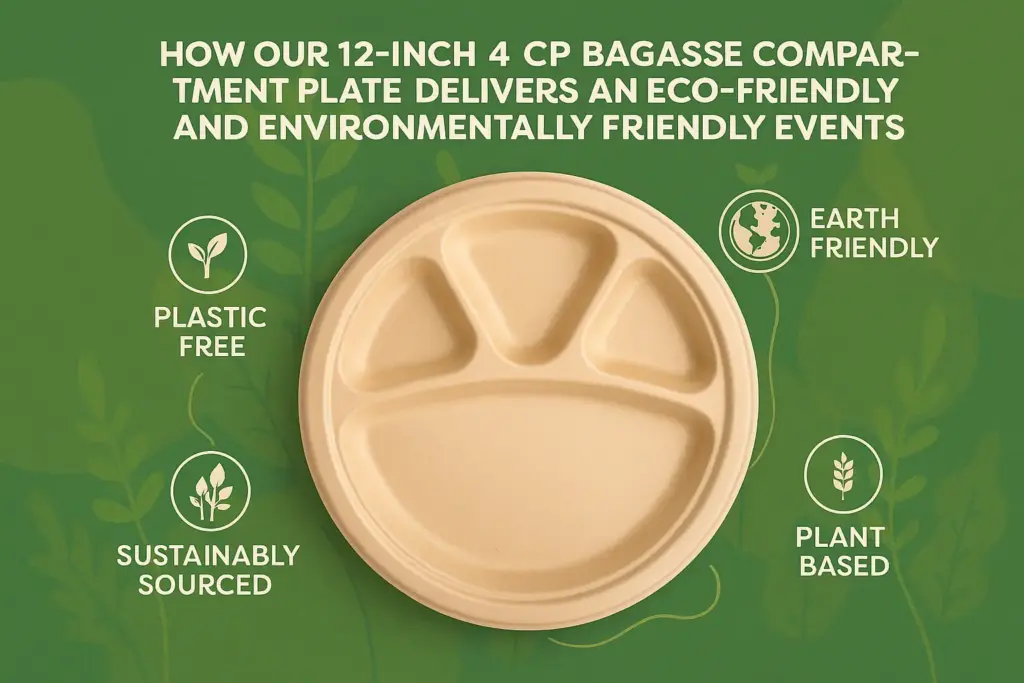Let’s take a walk through time.
Long before packaging machines and plastic factories took over the world, meals were shared on banana leaves, sal plates, and hand-folded palm fronds. There were no bins to throw them into — because there was no need. Everything returned to the earth. And the earth, in turn, thrived.
This was the original tableware: organic, compostable, harmless.
But as time moved forward, convenience began to overshadow consciousness. In the race to make life easier, we overlooked the consequences. In this transition, we lost touch with nature’s wisdom.
Chapter 1: The Leaf Era – Nature’s Own Tableware
Centuries ago, before industrialization, people relied on what nature provided. Dining habits were deeply rooted in ecology and respect for the land.
In India, Southeast Asia, and parts of Africa, communities used:
- Banana Leaves: Large, water-resistant, and naturally antimicrobial.
- Sal Leaves and Areca Palm Leaves: Stitched into bowls or plates using natural fibers.
These leaf-based utensils were fully biodegradable. After use, they were either fed to animals or left to decompose naturally, enriching the soil.
Advantages:
- No processing or energy use
- Readily available in tropical regions
- Safe, hygienic, and culturally accepted
Limitations:
- Short shelf life; cannot be stored long-term
- Limited to regional availability
- Not scalable for modern commercial needs
This was a time when culture, consumption, and the climate lived in balance.
Chapter 2: The Rise of Plastic and Synthetic Tableware
By the mid-20th century, industrial progress and mass urbanization called for solutions that could meet rising demand. The discovery and commercialization of plastic revolutionized manufacturing.
Plastic Tableware Emerges:
- Plastic offered low-cost, scalable production.
- It was lightweight, durable, and could be molded into any shape.
- By the 1970s, plastic cutlery and plates became commonplace in global food services.
However, plastic’s strengths soon revealed their dark side.
Environmental Impact:
- Takes 400 to 1,000+ years to decompose
- Contains petroleum-based chemicals that leach into soil and water
- Burning plastic releases harmful toxins like dioxins and furans
Human Impact:
- Microplastics are now found in drinking water, seafood, salt, and even human bloodstreams
- Chemicals used in plastic production, such as BPA, have been linked to hormone disruption and cancer
Pros:
- Inexpensive and scalable
- Long shelf life
Cons:
- Non-biodegradable
- Highly polluting
- Toxic to humans and wildlife
The plastic era brought unprecedented convenience but left behind a legacy of environmental degradation.
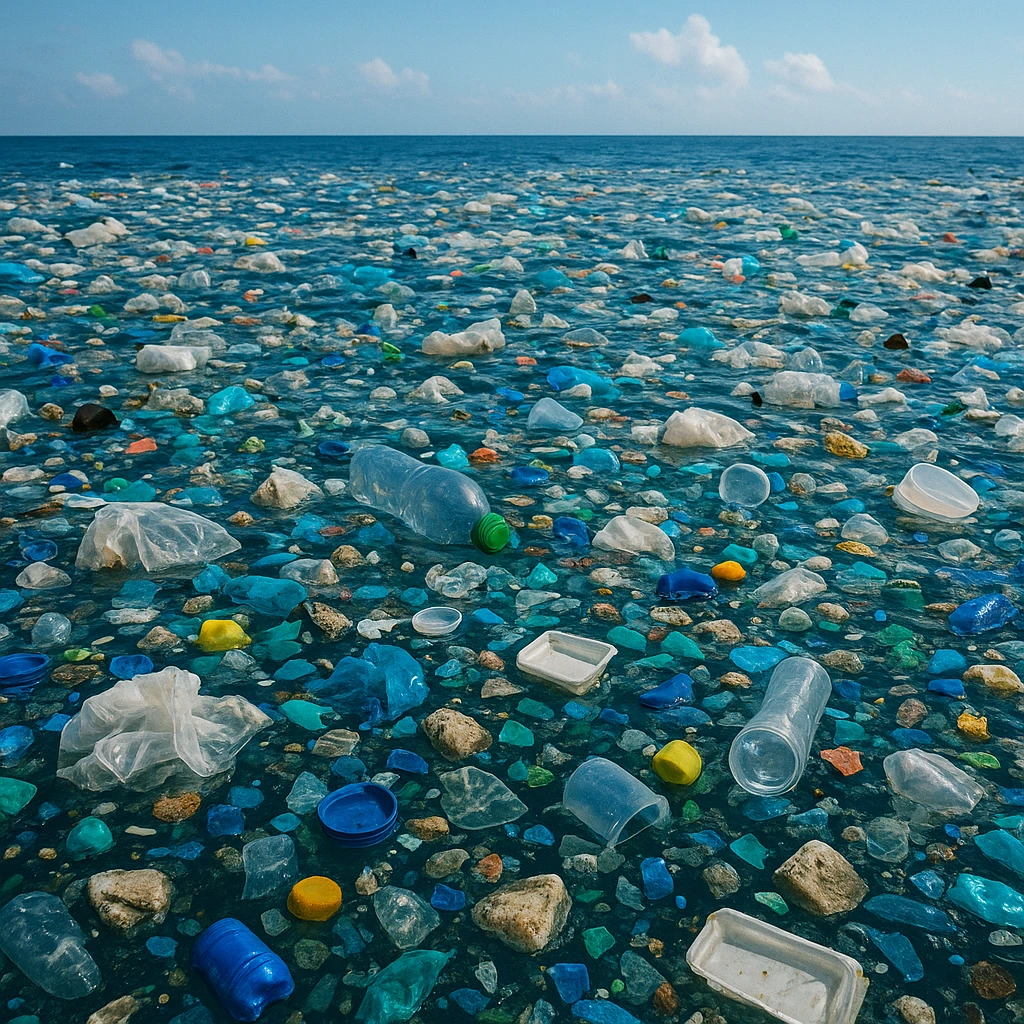
Chapter 3: The Thermocol Phase – Light but Lethal
Thermocol, or expanded polystyrene (EPS), gained popularity in the 1990s due to its ultra-light weight and insulation properties. Often used for cheap meal trays, cups, and takeaway boxes, thermocol was widely adopted in the food industry.
Common Use Cases:
- Street food vendors
- Railways and institutional catering
- Party and event disposables
However, it became one of the most environmentally damaging materials ever introduced into the disposable category.
Health & Environmental Concerns:
- Contains styrene, a known human carcinogen
- Breaks down into micro-fragments that persist in the environment for centuries
- Nearly impossible to recycle economically
Policy Response:
- India banned single-use plastic and thermocol items in many states post-2022
- Several countries globally have moved to restrict EPS use, including the European Union and parts of the U.S.
Conclusion: Thermocol was a solution to cost, but a disaster for health and the environment.
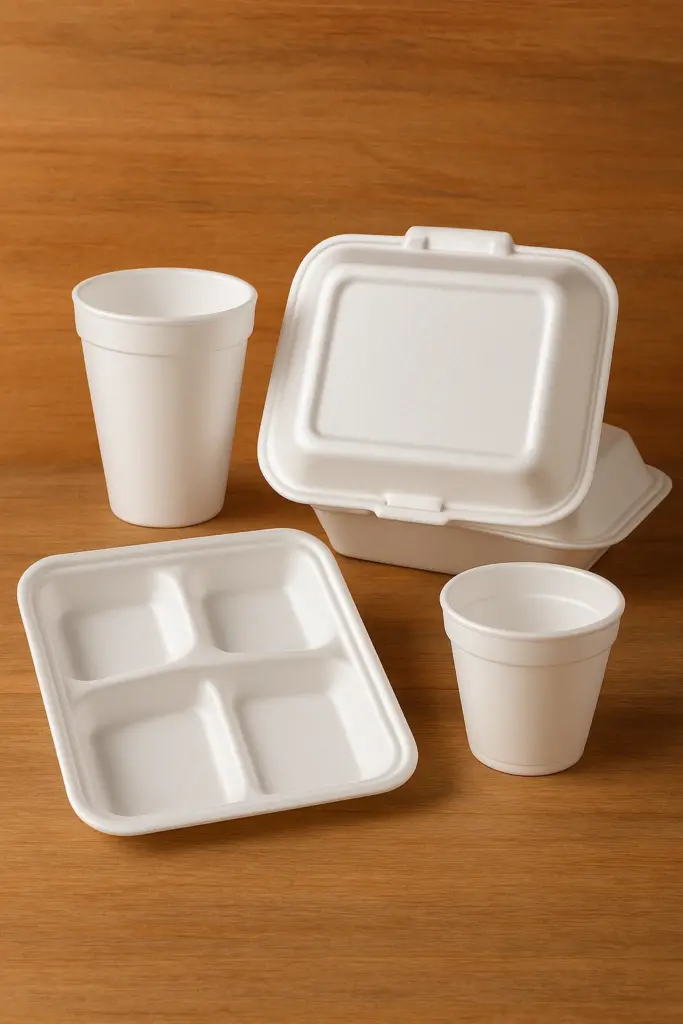
Chapter 4: A Global Wake-Up Call
The 2010s saw rising global awareness of plastic pollution. Viral images of oceans filled with plastic, dead marine life with bellies full of waste, and news of microplastics found in drinking water triggered widespread concern.
Public Reaction:
- Campaigns like “Beat Plastic Pollution” by the United Nations
- Documentaries like “A Plastic Ocean” and “The Story of Stuff”
- School curriculum updates to include sustainability education
Government Action:
- Ban on single-use plastics in 77 countries by 2022
- Introduction of Extended Producer Responsibility (EPR) laws
- Tax incentives and subsidies for eco-alternatives
People began to question the systems they had blindly trusted. It was clear: something had to change.
Chapter 5: Bagasse – The Return to Nature, Backed by Technology
What Is Bagasse?
Bagasse is the fibrous residue left after extracting juice from sugarcane. India, being one of the top sugarcane producers, generates millions of tonnes of bagasse annually. What was once burned or discarded is now finding a second life as eco-friendly tableware.
Pulpcraft and the Bagasse Revolution:
Brands like Pulpcraft are pioneering the use of bagasse to create:
- Round and compartmentalized plates
- Food-grade bowls and clamshell containers
- Meal trays for catering and packaging
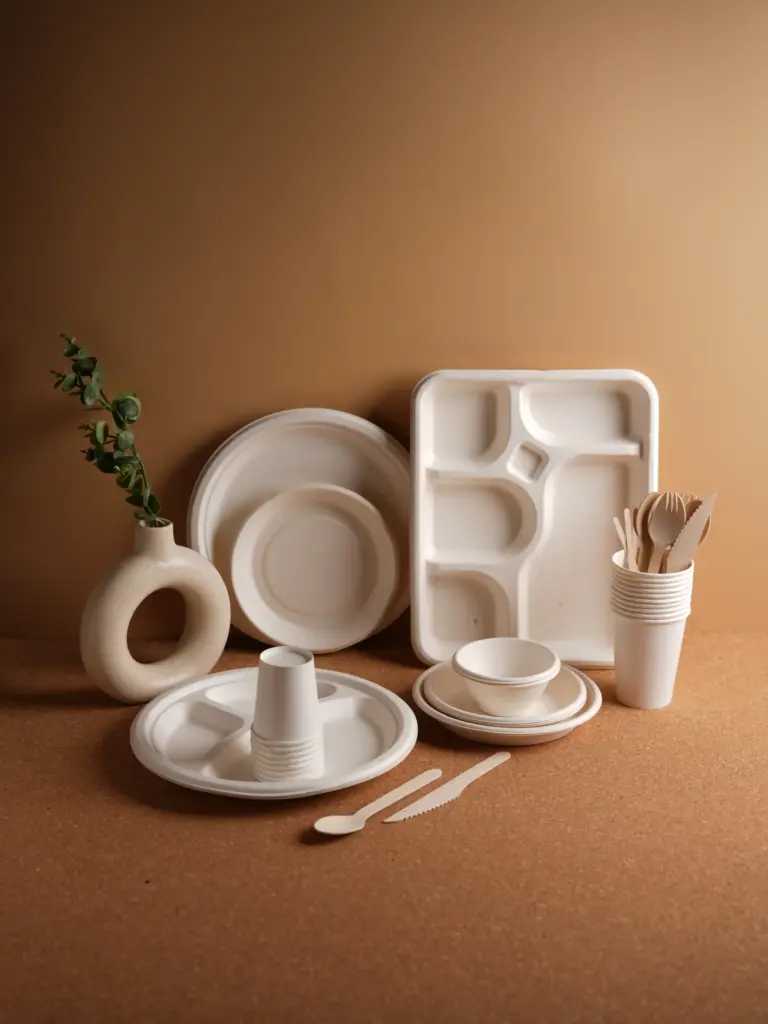
Benefits of Bagasse Tableware:
Environmental:
- 100% biodegradable and compostable within 60–90 days
- Emits 70% less CO2 during production compared to plastic
- Made from renewable agricultural waste
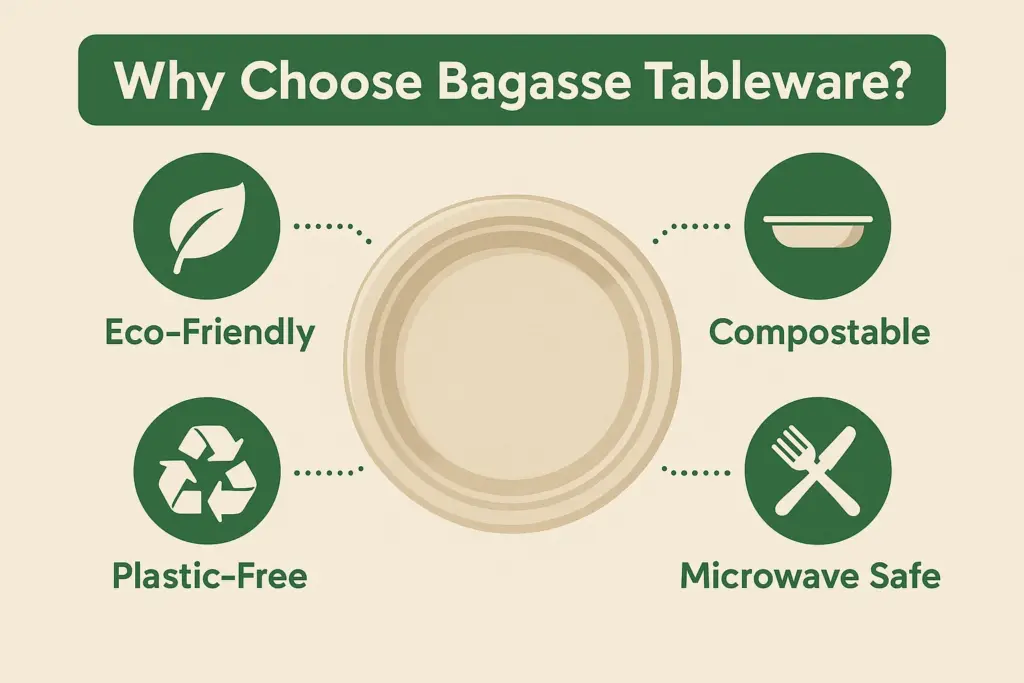
Functional:
- Microwave and freezer safe
- Grease- and moisture-resistant
- Durable and visually appealing
Economic:
- Cost-effective in the long term with rising plastic regulation fines
- Eligible for subsidies and eco-certifications
- Supports local farmers and agri-waste management
Challenges:
- Slightly higher upfront cost compared to thermocol or plastic
- Needs greater awareness and adoption among mass consumers
Still, the future is clear: Bagasse bridges the gap between nature and need.
Chapter 6: A Call to Conscience and Change
We began with leaves, and we may end with something very close to them — but smarter, scalable, and just as natural. The journey of disposable tableware reflects our changing relationship with the planet.
Where We Went Wrong:
- We prioritized convenience over consequence
- We treated nature like a limitless dumping ground
- We ignored warnings until the damage became visible
What We Can Do Now:
- Educate consumers and businesses about the true cost of plastic
- Incentivize manufacturers to adopt compostable alternatives
- Choose products made from bagasse and other bio-materials
We still have time to fix what we broke. We can heal, rebuild, and reimagine.
Bagasse is not just a material — it’s a movement. A return to balance.
Let’s lead the future of disposable dining with responsibility, innovation, and care.
